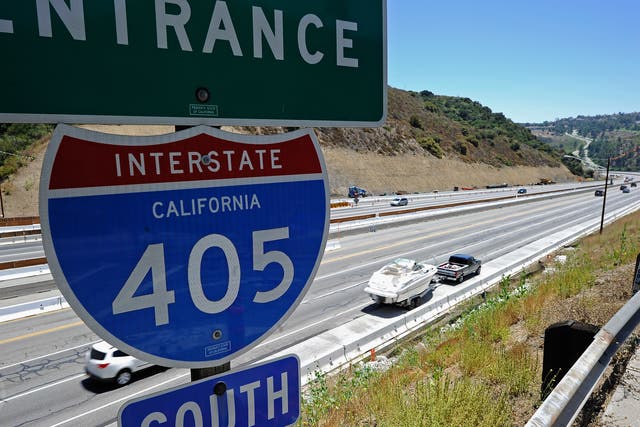

On June 29, 1956, President Dwight Eisenhower signed the Federal-Aid Highway Act of 1956. The bill created a 41,000-mile “National System of Interstate and Defense Highways” that would, according to Eisenhower, eliminate unsafe roads, inefficient routes, traffic jams and all of the other things that got in the way of “speedy, safe transcontinental travel.” At the same time, highway advocates argued, “in case of atomic attack on our key cities, the road net [would] permit quick evacuation of target areas.” For all of these reasons, the 1956 law declared that the construction of an elaborate expressway system was “essential to the national interest.”
Today, there are more than 250 million cars and trucks in the United States, or almost one per person. At the end of the 19th century, by contrast, there was just one motorized vehicle on the road for every 18,000 Americans. At the same time, most of those roads were made not of asphalt or concrete but of packed dirt (on good days) or mud. Under these circumstances, driving a motorcar was not simply a way to get from one place to another: It was an adventure. Outside cities and towns, there were almost no gas stations or even street signs, and rest stops were unheard-of. “Automobiling,” said the Brooklyn Eagle newspaper in 1910, was “the last call of the wild.”
Did you know? At 3,020 miles, I-90 is the longest interstate highway. It connects Seattle, Washington, with Boston, Massachusetts.
This was about to change. In 1908, Henry Ford introduced the Model T, a dependable, affordable car that soon found its way into many American garages. By 1927, the year that Ford stopped making this “Tin Lizzie,” the company had sold nearly 15 million of them. At the same time, Ford’s competitors had followed its lead and begun building cars for everyday people. “Automobiling” was no longer an adventure or a luxury: It was a necessity.
A nation of drivers needed good roads, but building good roads was expensive. Who would pay the bill? In most cities and towns, mass transit–streetcars, subways, elevated trains–was not truly “public” transportation. Instead, it was usually built and operated by private companies that made enormous infrastructural investments in exchange for long-term profits. However, automobile interests–such as car companies, tire manufacturers, gas station owners and suburban developers–hoped to convince state and local governments that roads were a public concern. That way, they could get the infrastructure they needed without spending any of their own money.
Their campaign was successful: In many places, elected officials agreed to use taxpayer money for the improvement and construction of roads. In most cases, before 1956 the federal government split the cost of roadbuilding with the states. (One exception was the New Deal, when federal agencies like the Public Works Administration and the Works Progress Administration put people to work building bridges and parkways.) However, this funding arrangement did not get roads built fast enough to please the most ardent highway advocates.
Among these was the man who would become President, Army General Dwight D. Eisenhower. During World War II, Eisenhower had been stationed in Germany, where he had been impressed by the network of high-speed roads known as the Reichsautobahnen. After he became president in 1953, Eisenhower was determined to build the highways that lawmakers had been talking about for years. For instance, the Federal-Aid Highway Act of 1944 had authorized the construction of a 40,000-mile “National System of Interstate Highways” through and between the nation’s cities, but offered no way to pay for it.
It took several years of wrangling, but a new Federal-Aid Highway Act passed in June 1956. The law authorized the construction of a 41,000-mile network of interstate highways that would span the nation. It also allocated $26 billion to pay for them. Under the terms of the law, the federal government would pay 90 percent of the cost of expressway construction. The money came from an increased gasoline tax–now 3 cents a gallon instead of 2–that went into a non-divertible Highway Trust Fund.
The new interstate highways were controlled-access expressways with no at-grade crossings–that is, they had overpasses and underpasses instead of intersections. They were at least four lanes wide and were designed for high-speed driving. They were intended to serve several purposes: eliminate traffic congestion; replace what one highway advocate called “undesirable slum areas” with pristine ribbons of concrete; make coast-to-coast transportation more efficient; and make it easy to get out of big cities in case of an atomic attack.
When the Interstate Highway Act was first passed, most Americans supported it. Soon, however, the unpleasant consequences of all that roadbuilding began to show. Most unpleasant of all was the damage the roads were inflicting on the city neighborhoods in their path. They displaced people from their homes, sliced communities in half and led to abandonment and decay in city after city.
People began to fight back. The first victory for the anti-road forces took place in San Francisco, where in 1959 the Board of Supervisors stopped the construction of the double-decker Embarcadero Freeway along the waterfront. During the 1960s, activists in New York City, Baltimore, Washington, D.C., New Orleans and other cities managed to prevent roadbuilders from eviscerating their neighborhoods. (As a result, numerous urban interstates end abruptly; activists called these the “roads to nowhere.”)
In many cities and suburbs, however, the highways were built as planned. All told, the Interstate Highway System is more than 46,000 miles long.
HISTORY.com works with a wide range of writers and editors to create accurate and informative content. All articles are regularly reviewed and updated by the HISTORY.com team. Articles with the “HISTORY.com Editors” byline have been written or edited by the HISTORY.com editors, including Amanda Onion, Missy Sullivan, Matt Mullen and Christian Zapata.